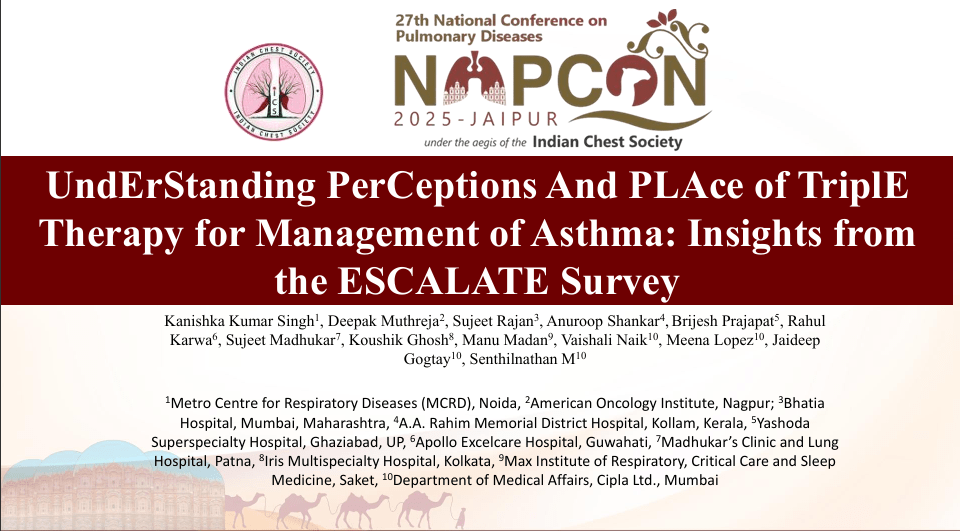Comparative In-Vitro Activity of Plazomicin in MCR-1 and Colistin-Resistant Enterobacteriaceae
Introduction
Polymyxin resistance in Enterobacteriaceae, especially K. pneumoniae, has become a major concern due to its impact on last-resort treatments. Resistance is linked to chromosomal mutations and the global spread of plasmid-mediated mcr-1/mcr-2 genes, often co-occurring with other resistance traits. Plazomicin is a novel aminoglycoside with in-vitro activity against multi-drug-resistant Gram-negative organisms.
Aim
To evaluate the in-vitro activity of Plazomicin compared to other antibiotics against colistin-resistant Enterobacteriaceae isolates.
Methods
- Total isolates tested: 95 colistin-resistant Enterobacteriaceae
- Resistance mechanisms:
- Chromosomal (e.g., mgrB, phoPQ, pmrAB): 42 isolates
- Plasmid-mediated (mcr-1): 21 isolates
- Intrinsic resistance to colistin (e.g., Proteus, Serratia, Morganella, Hafnia): 8 isolates
- Unknown mechanisms: 24 isolates
Study endpoints
Primary: Minimum Inhibitory Concentration (MIC) of plazomicin against colistin-resistant Enterobacteriaceae isolates
Secondary:
- Comparison of plazomicin susceptibility with other aminoglycosides (amikacin, gentamicin, tobramycin) and antibiotics (carbapenems, tigecycline, fluoroquinolones, etc.)
- Susceptibility profiles: Resistance mechanisms (intrinsic, chromosomal, plasmid-mediated via mcr-1, or unknown) based on CLSI and EUCAST interpretive criteria
- Detection of resistance genes: Presence of 16S rRNA methyltransferase genes (e.g., armA, rmtC, rmtF) and carbapenemase genes (e.g., bla_NDM) in isolates with elevated plazomicin MICs.
Results
Plazomicin MIC Distribution
- Plazomicin inhibited 89.5% of isolates at 2 mg/L and 93.7% at 4 mg/L
- MIC₉₀ for plazomicin:
- 2 mg/L for MCR-1 positive and chromosomally resistant strains
- 4 mg/L for naturally colistin-resistant bacteria
Comparison with Other Aminoglycosides
- Plazomicin was found to be more active than other tested aminoglycosides against this collection of colistin-resistant isolates
- Plazomicin MIC90 value was 4mg/L
Table 1: MIC₉₀ and Non-Susceptibility Rates of Aminoglycosides Against Colistin-Resistant Isolates
|
Antibiotic |
MIC₉₀ (mg/L) |
Non-susceptibility (%) |
|
Amikacin |
32 |
16.8% (16/95) |
|
Gentamicin |
>64 |
47.4% (45/95) |
|
Tobramycin |
64 |
63.2% (60/95) |
Resistance Genes
- Five K. pneumoniae isolates had plazomicin MIC of 128 mg/L; none of these isolates carried mcr-1. All carried 16S rRNA methyltransferase genes (armA in three isolates, rmtC and rmtF in one isolate each) and blaNDM carbapenemase gene was also detected in four of these isolates
- One Enterobacter cloacae isolate had MIC of 8 mg/L without methyltransferase gene
Conclusion
- Plazomicin showed in-vitro susceptibility against colistin-resistant Enterobacteriaceae regardless of the mechanism of polymyxin resistance (intrinsic, acquired, chromosome or plasmid-encoded)
- Plasmids encoding MCR-1/MCR-2 polymyxin resistance traits did not alter plazomicin susceptibility of Enterobacteriaceae. Plazomicin showed superior susceptibility than other aminoglycosides against the collection of isolates in this study
Reference
J Antimicrob Chemother. 2017 Oct 1;72(10):2787-2791









